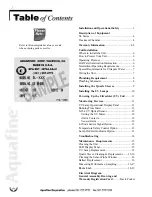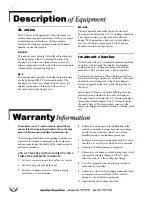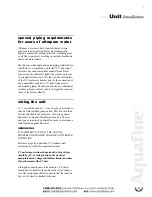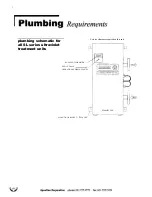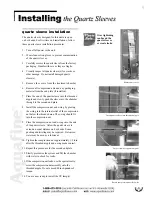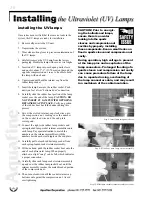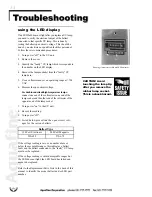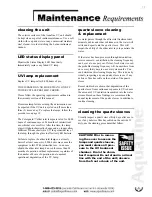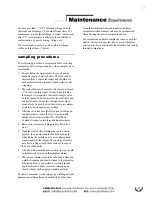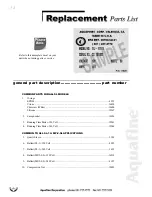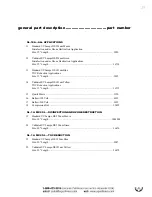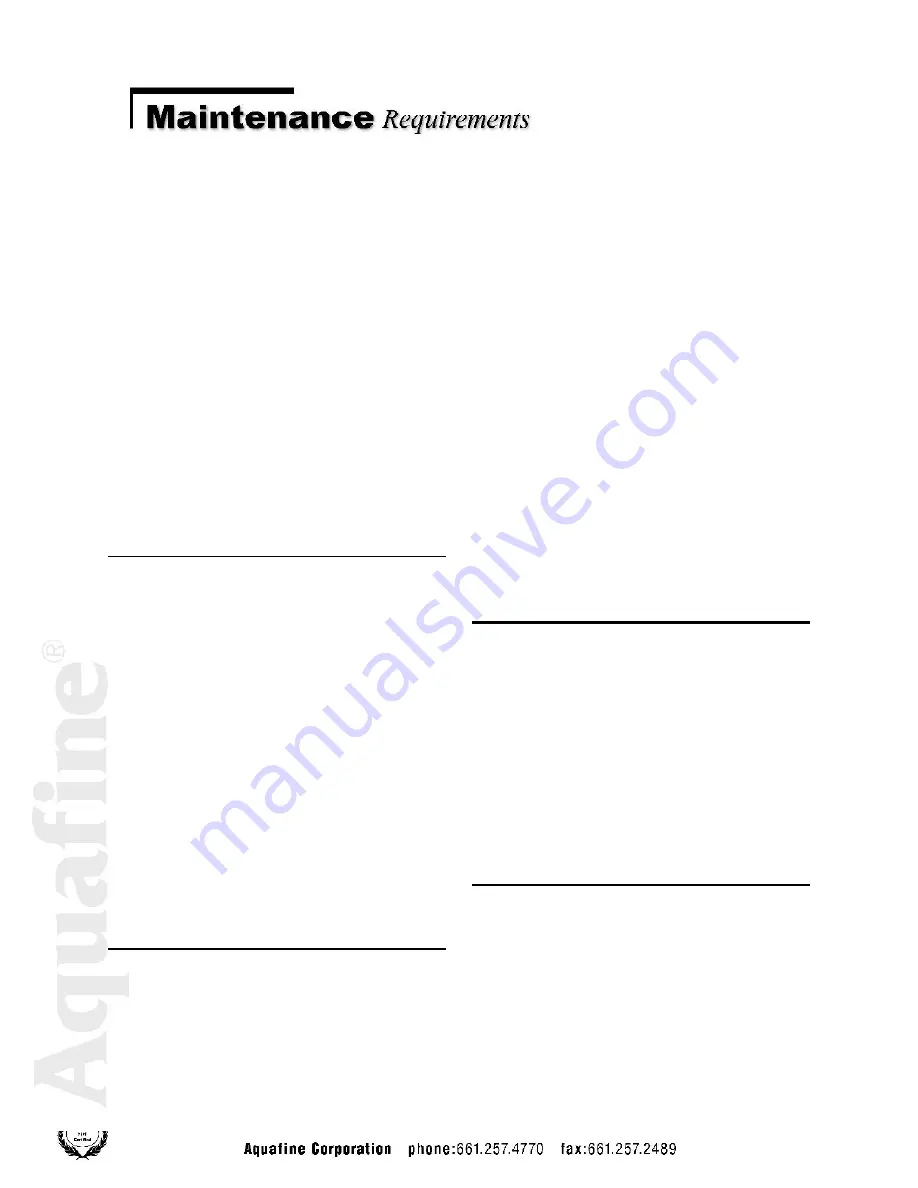
16
more
cleaning the sensor
probe window
1. Shut off the flow and release the pressure.
2. Shut off all power to the UV unit.
3. Remove the coaxial cable by pushing and turning
the BNC terminal counterclockwise. The connector
will slide off.
4. Twist and pull the probe from the sensor fitting.
5. Use a lint-free cloth with alcohol and very carefully
wipe the lens face on the front of the probe. Failure
to do so may result in false readings.
6. Replace the probe and the coaxial cable.
7. Turn the power on and resume operation. Whenever
new lamps have been installed, follow instructions
on page 12 under “Setting the UV Meter.”
ballast replacement
Ballast replacement is not part of the UV unit’s routine
maintenance. However, in the event that a ballast needs
to be replaced, the following procedure should be
followed:
1. Power down the UV unit by turning the unit isolator
switch, if installed, to the “OFF” position. If not,
ensure that power to the unit is removed by opening
the switch or breaker upstream of the UV unit.
2. Locate the old ballast to be replaced. Refer to the
electrical diagram, if necessary.
3. Isolate the old ballast from rest of system by discon-
necting the ballast connector.
4. Using 5/32 L-shaped hex wrench completely
remove the bolt securing the ballast to the sub
panel. Put the bolt aside.
5. Remove the old ballast by pulling it towards you.
Discard the old or defective ballast.
6. Install the new ballast, securing it with the bolt
removed earlier.
7. Tighten the bolt with 5/32 L-shaped hex wrench.
8. Reconnect ballast.
9. Restore the power to the UV unit by turning the unit
isolator switch to the “ON” position or by closing
the upstream switch or breaker.
measuring performance
Every UV treatment unit should be tested periodically to
verify actual efficiency. Regardless of the intended
application or any optional equipment which may have
been provided with your UV unit, the most accurate and
dependable procedure is to conduct post-UV sample
analysis in accordance with standard testing methods.
Periodic sample collection and testing should be
scheduled as often as the user deems sufficient to be
assured the quality of the Aquafine ultraviolet unit
effluent is acceptable.
obtaining proper
water samples
Our experience has shown that the vast majority of
unsatisfactory post-UV bacteriological samples are
directly related to improper sample-taking techniques.
There are a variety of commercial sample collection
apparatuses available, and should you choose one, be
sure to follow the manufacturer’s recommended
procedures.
1. Turn off the water to the unit.
2. Disconnect the electrical circuit.
3. Drain the UV treatment chamber.
4. Wear clean cotton gloves to prevent contami-
nation of the quartz sleeves and UV lamps.
5. Remove the lamp sockets.
6. Remove the ultraviolet lamps from inside the
quartz sleeves.
7. Using the appropriate compression nut tool,
loosen the compression nuts and carefully
remove the quartz sleeves.
8. Wash the quartz sleeves with mild soap and hot
water and rinse with clean, hot water.
Should this be insufficient to clean the quartz
sleeves, they should be replaced. To place an order,
contact Aquafine or your local representative. To
replace the quartz sleeves, follow the procedures on
page 9.
Summary of Contents for MP-2-SL
Page 2: ......

